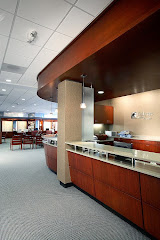Well, Dr. Kelly is offering a procedure in the near future that will correct Keratoconus! Here is a little information for ya!
What is Keratoconus?
Keratoconus is a degenerative non-inflammatory disorder of the eye in which structural changes within the cornea cause it to thin and change to a more conical shape than its normal gradual curve. Keratoconus can cause substantial distortion of vision, with multiple images, streaking and sensitivity to light all often reported by the patient. Keratoconus is the most common dystrophy of the cornea, affecting around one person in a thousand, and it seems to occur in populations throughout the world, although some ethnic groups experience a greater prevalence than others. It is typically diagnosed in the patient's adolescent years and attains its most severe state in the twenties and thirties.
Keratoconus is a little-understood disease with an uncertain cause, and its progression following diagnosis is unpredictable. If afflicting both eyes, the deterioration in vision can affect the patient's ability to drive a car or read normal print. In most cases, corrective lenses are effective enough to allow the patient to continue to drive legally and likewise function normally. Further progression of the disease may require surgery including transplantation of the cornea. Despite its uncertainties, keratoconus can be successfully managed with a variety of clinical and surgical techniques, and often with little or no impairment to the patient's quality of life.
What are the symptoms of Keratoconus?
People with early keratoconus typically notice a minor blurring of their vision and come to their clinician seeking corrective lenses for reading or driving. At early stages, the symptoms of keratoconus may be no different from those of any other refractive defect of the eye. As the disease progresses, vision deteriorates, sometimes rapidly. Visual acuity becomes impaired at all distances, and night vision is often quite poor. Some individuals have vision in one eye that is markedly worse than that in the other eye. Some develop photophobia (sensitivity to bright light), eye strain from squinting in order to read, or itching in the eye.[6] There is however normally little or no sensation of pain.
The classic symptom of keratoconus is the perception of multiple 'ghost' images, known as monocular polyopia. This effect is most clearly seen with a high contrast field, such as a point of light on a dark background. Instead of seeing just one point, a person with keratoconus sees many images of the point, spread out in a chaotic pattern. This pattern does not typically change from day to day, but over time it often takes on new forms. Patients also commonly notice streaking and flaring distortion around light sources.
What does Keratoconus look
 like?
like?How can Keratoconus be treated?
Dr. Kelly is currently practicing Intacs with intent to perform the surgery on patients in the near future. Intacs for Keratoconus is a corneal implant for individuals experiencing an intolerance to contact lens and are facing a corneal transplant. Intacs corneal implants may be the best possible option to stabilize the cornea, improve vision and potentially defer the need for a corneal transplant. They are indicated for use in the correction of nearsightedness and astigmatism associated with keratoconus where contact lenses and glasses are no longer suitable.
Learn more here: http://www.intacsforkeratoconus.com/. Or call us at 919-282-1100!
Have a great day!




3 comments:
I will be one of the first to have this procedure done by Dr. Kelly on my right eye on Aug 25, 2008. Unless I am advised not to, I will post my experience here so others can learn and know what to expect.
Currently, I am legally blind in my right eye and do not wear contacts or glasses. I use my left eye for everything and just deal with the headaches, etc. I am excited to have the procedure done as I know it will improve my overall quality of life.
Surgery Day - Placed under the machine, I was a little nervous. However, Dr. Kelly's staff is excellent - always asking if I needed anything or was okay. Jamie, Melody, everyone was great. I could feel suction on my eye during the insertion of the Intacts, but other than that, I didn't really feel any other pain or discomfort. I left the operating room with my drop instructions (Vigamox, Omnipred, and Systane) and went straight home anxious and nervous about how I would feel the next morning.
Post Surgery
1st Night - Slept very well thanks to the Ambien and the eye patch.
Day 1 - Woke up fine and followed the instructions for the drops, no real pain or discomfort, much better than I anticipated. Went in for the Day after Post-Op and Dr. Kelly said everything looked good. Having had PRK in my other eye, it was a night and day difference. For me the PRK was discomforting on a large scale. Intacts was not bad at all, at least for the first 24 hours. Dr. Kelly removed the protective contact and sent me on my way. I would go back in one week for my second Post-Op appointment.
Day 2 - A little discomfort in the morning, feeling as if I had goggles on with a little water in them.
Day 3-6 - No changes, but noticed I was experiencing a strange taste in my throat after taking the drops. Vision fluctuating daily.
Day 7 - Had my second Post-Op. Asked about the strange taste from taking the drops and was told this was the Vigamox and wasn't unusual. Told Dr. Kelly about the sensation of having water in a pair of goggles. He didn't seem surprised and encouraged me to continue to take care of the eye and use the Systane drops. I left the office and was scheduled to come back in a month.
Day 7,8,9,10,11,12,13,14,15,16,17 - No real changes, eye a little tender when I first wake-up and still have a slight sensation of wearing a pair of goggles with water in them. Vision in the eye continues to fluctuate each day (too early to be more specific).
Day 18 - Last Day for taking drops. Will be using Systane regularly. Will continue to report on status as I go on.
Hi, I found this great site on Keratoconus which I wanted to send you
http://www.kcglobal.org
Post a Comment